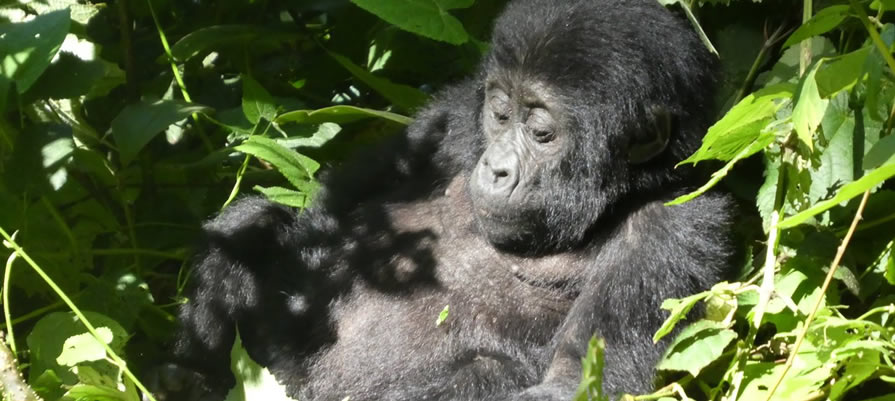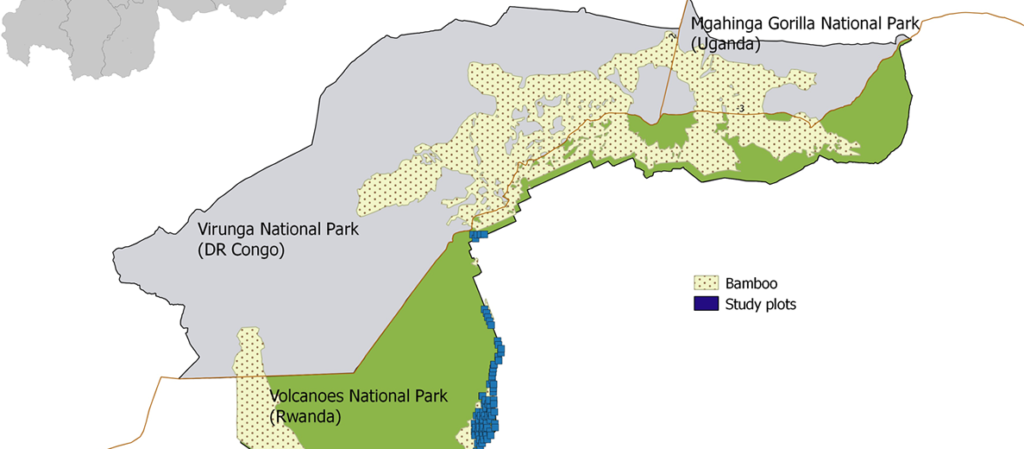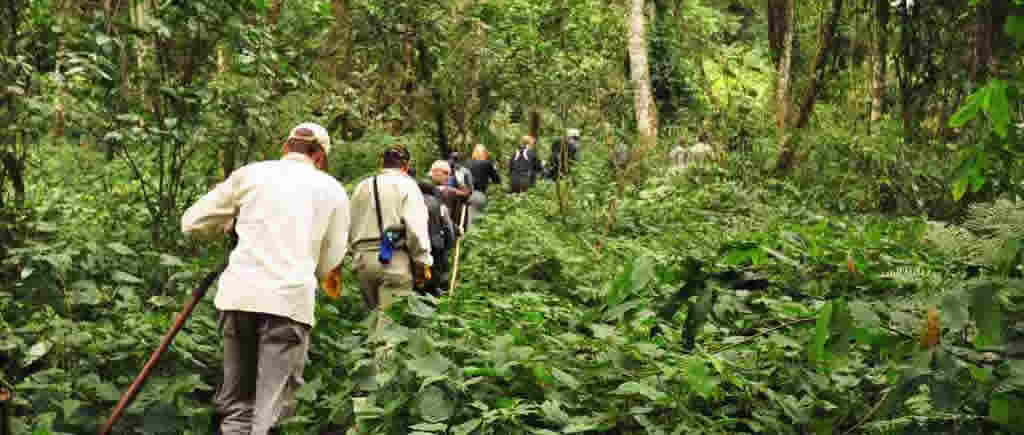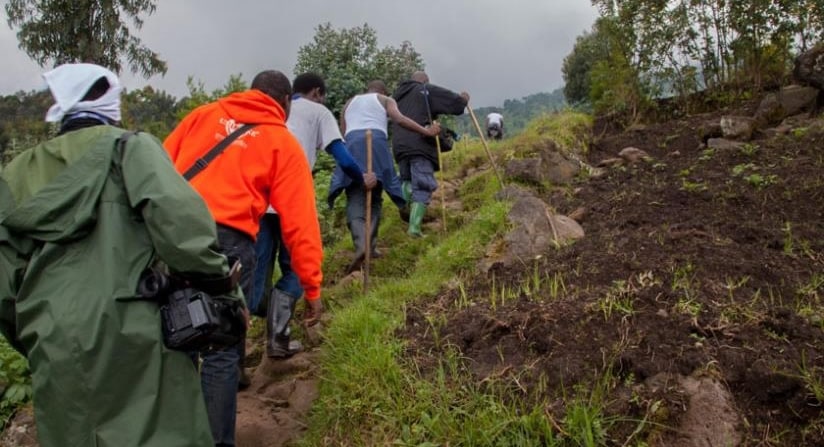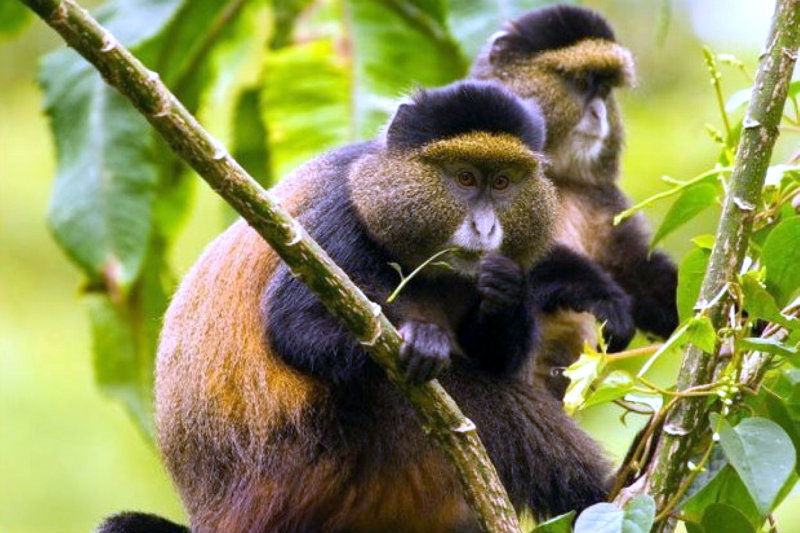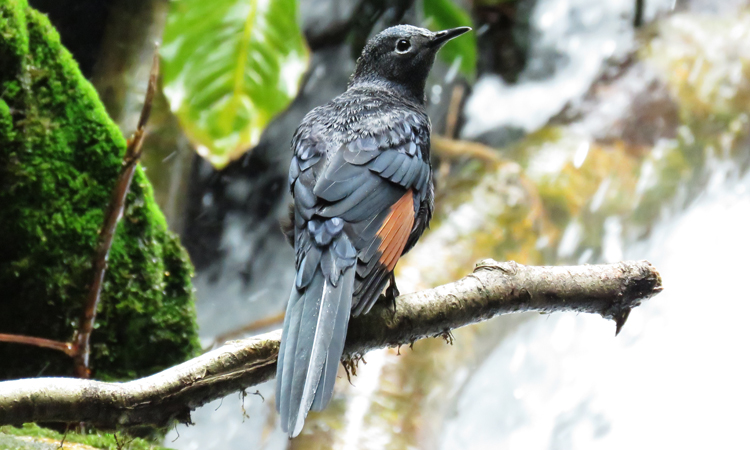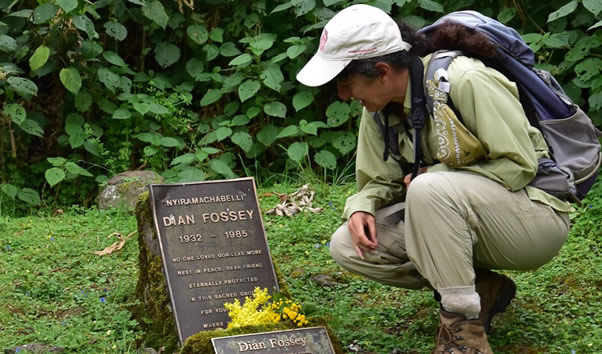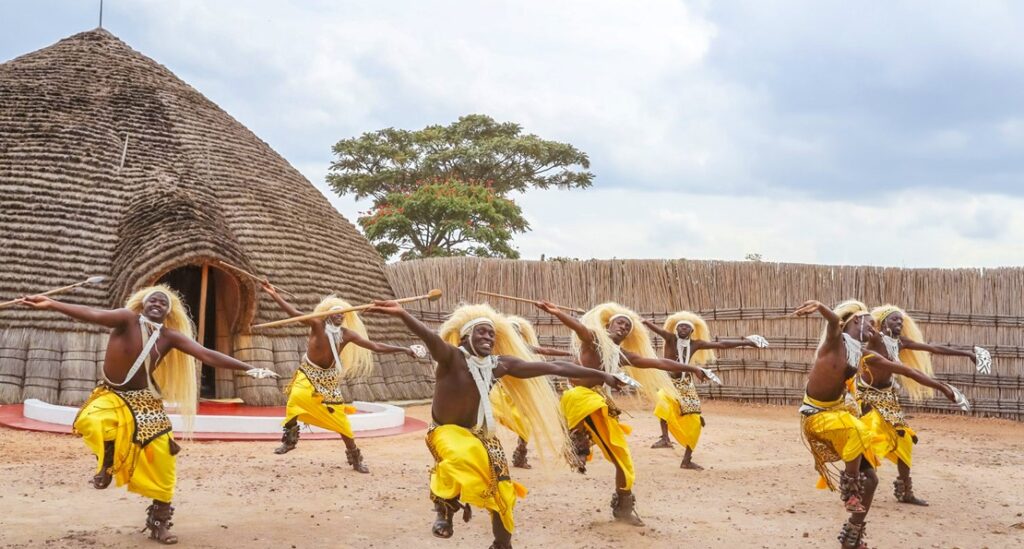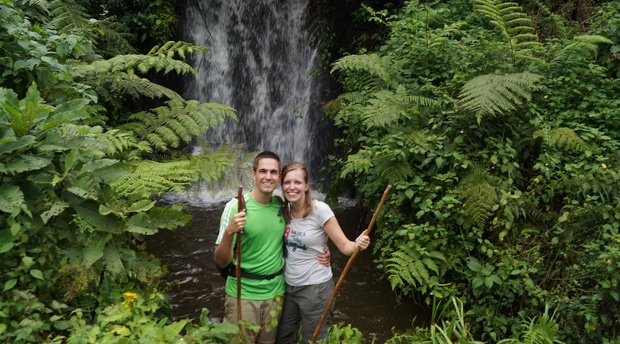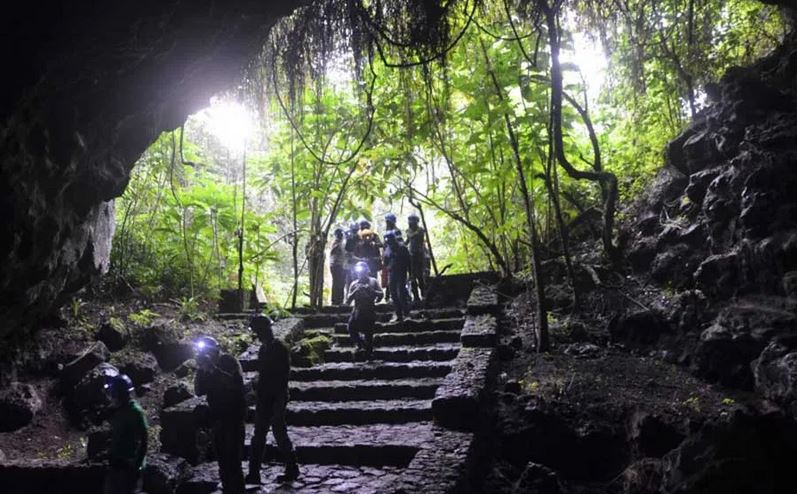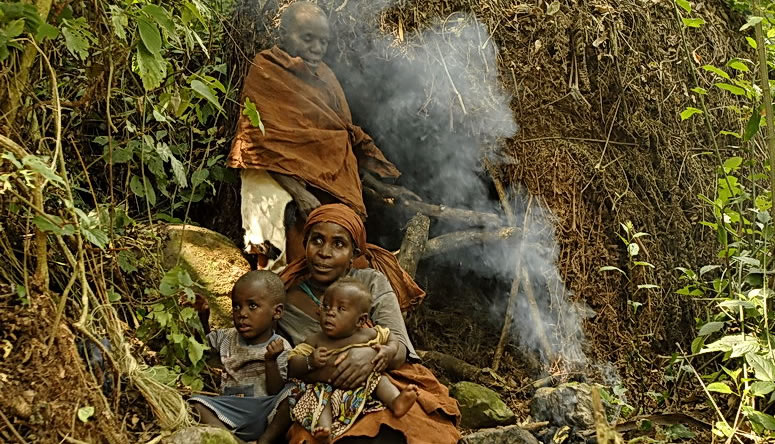Tourists visiting Rwanda for gorilla safaris in Volcanoes National Park have up to 12 fully habituated gorilla families to track. Volcanoes National Park lies within the Virunga Conservation Area, and it is Rwanda’s only place to visit for a gorilla trekking experience. Over 30% of the remaining 1063 mountain gorillas on earth live in VNP of Rwanda making it a preferred Rwanda safari holiday destination. Other mountain gorillas live in Bwindi Impenetrable National Park & Mgahinga Gorilla N/Park, the Virunga National Park. The 12 habituated families in VNP translate into 96 gorilla permits, these are open for booking by gorilla safari travelers to Rwanda. Each of Rwanda’s valid gorilla trekking permits costs USD1500 per person and tracking mountain gorillas is done only once a day.
Here are the 12 fully habituated gorilla families in VNP
Gorilla Families in Volcanoes National park
Susa B- Karisimbi Family
Susa B, also referred to as Karisimbi family was originally part of Susa A gorilla group, but it split off. Susa B gorilla group broke off from the original Susa A in 2008 and it has about 16 mountain gorillas. It is one of the best mountain gorilla families visitors who prefer tough treks can consider while on the Rwanda gorilla tour in Volcanoes National Park
Karisimbi/Susa B resides at a higher altitude, and the group takes its name from Karisimbi, the highest volcano in the Virunga region. This sits at an altitude of about 4507m.
Susa A gorilla family
 The Susa A is perhaps the most famous gorilla group, and it is where Dian Fossey carried out her research on gorillas. She did camping in the Virunga Region from 1967 to 1985 studying more about the daily gorilla behaviors. Unfortunately, she mysteriously died but left a remarkable legacy. The Susa A group originally consisted of 42 gorillas and these apes roam at the higher altitude. The group later split reducing its members to about 28 featuring 3 silverback gorillas.
The Susa A is perhaps the most famous gorilla group, and it is where Dian Fossey carried out her research on gorillas. She did camping in the Virunga Region from 1967 to 1985 studying more about the daily gorilla behaviors. Unfortunately, she mysteriously died but left a remarkable legacy. The Susa A group originally consisted of 42 gorillas and these apes roam at the higher altitude. The group later split reducing its members to about 28 featuring 3 silverback gorillas.
Amahoro group
Amahoro gorilla family is referred to as a “peaceful” family, an interesting group with 17 mountain gorillas. This group was created under the leadership of Ubumwe silverback, breaking away from Umubano family that was led by Charles. Visiting Amahoro gorilla family requires a little bit of fitness to complete the entire trek, but it is one interesting family to be visited. The group consists not only of silverbacks but also females, juveniles, blackbacks and more.
Sabyinyo
Sabyinyo gorilla family gets its name from Sabyinyo volcano. This gorilla group roams between the Sabyinyo and Gahinga volcanoes of Volcanoes National Park, Northwestern Rwanda. This is one of the easiest gorilla families you can find at the foothills of Mt. Sabyinyo. It is under the leadership of Guhonda, one of the renowned powerful silverbacks who constantly challenged Ryango. Compared to most families, Sabyinyo consists of fewer members about 16 and its silverback weighs up to about 220kgs.
Agashya/Group 13
 Agashya takes its name as Group 13 considering the number of mountain gorillas that originally made up the family. It was led by Nyakarima, but he was challenged by Agashya leading to the creation of Group 13. The word Agashya refers to “The News.” It is believed that before Agashya silverback could incite Nyakarima into a fight, he used to assess his strength.
Agashya takes its name as Group 13 considering the number of mountain gorillas that originally made up the family. It was led by Nyakarima, but he was challenged by Agashya leading to the creation of Group 13. The word Agashya refers to “The News.” It is believed that before Agashya silverback could incite Nyakarima into a fight, he used to assess his strength.
After challenging Nyakarima, he went away with its members and relocated to a higher elevation making it difficult for Nyakarima to track them down. Currently, the membership at Agashya has increased from the original 13 to 20 mountain gorillas including females, blackback gorillas, sub-adult male, sub-adult female, silverbacks and babies.
Umubano gorilla family
Umubano gorilla family split from its original group- Amahoro. It split after Ubumwe was challenged by Umubano and Charles turned into silverback, he couldn’t contain the orders and he ended up fighting Ubumwe. It took them weeks to months to fight until Charles went away with some female gorillas to create his own group- the Umubano family.
Kwitonda
Kwitonda family is one of the fully habituated gorilla groups in Volcanoes National Park. This family is known to roam around the slopes of Mount Muhabura and at times, they climb to higher altitudes. It was initially led by Kwitonda silverback till 2012 when he died and its name means the humble one.
Hirwa
Hirwa gorilla family was introduced in 2006 and it takes its name from the word Hirwa meaning the “lucky one.” It is led by Munyinya silverback and its members come from two different families- Sabyinyo and Group 13/Agashya. It is one of the smallest families in Rwanda’s Volcanoes National Park, comprising of about 9 members and these include blackbacks, silverback, females, babies and others.
Ugenda
 Ugenda family takes its name from Kinyarwanda word Ugenda meaning “on the move/mobile.” It is one group with 11 mountain gorillas including 2 silverbacks, females and babies. They seem not to prefer staying in one location and tracking them involves navigating through long distances in the forest before you find finally come across these apes.
Ugenda family takes its name from Kinyarwanda word Ugenda meaning “on the move/mobile.” It is one group with 11 mountain gorillas including 2 silverbacks, females and babies. They seem not to prefer staying in one location and tracking them involves navigating through long distances in the forest before you find finally come across these apes.
Titus
Titus gorilla group takes its name from Titus silverback gorilla. This is one of the oldest families and dates back to the Dian Fossey era. It is one group that Dian Fossey conducted her study from. Titus featured among the survivors at the time the group was formed, but unfortunately, he died in 2009 at 35 years. Titus group resides around Mt. Karisimbi and Bisoke slopes.
Pablo
Pablo gorilla family takes its name from Pablo silverback, who also led the family for just a year. His leadership was later succeeded by Cant’s bee and it spends most of its time around the slopes of Mt. Karisimbi, the tallest Virunga Volcano rising tall up to 4507m.
Bwenge gorilla family
Bwenge family consists of 11 mountain gorillas, and its members were linked to Gorillas in the Mist movie. The group gets its name from Bwenge silverback and the word Bwenge means wisdom. It was created in 2007 and its leader- Bwenge died in 2014.






